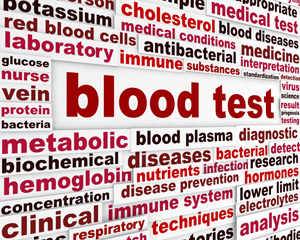Test Talk: Ammonia
test requirements and diagnostic value for phlebotomists
by Dennis Ernst • February 06, 2020

Physicians order ammonia levels when they suspect liver disease, especially when the patient has mental changes or lapses into a coma. It's also ordered on newborns who suddenly has vomiting episodes and becomes lethargic, and when children enter a pattern of continuous vomiting after a viral infection, which suggests Reye Syndrome.
When bacteria digest protein, ammonia is a byproduct that enters the blood stream. Under normal conditions, the liver removes it from the blood and breaks it down into urea and glutamine, which the kidneys eliminate. If the liver is diseased, cancerous, or otherwise dysfunctional, ammonia builds up in the blood and enter the brain where it is toxic and can cause patients to become lethargic or comatose. High ammonia levels in the brain can also cause hepatic encephalopathy, which is a cognitive impairment due to a dysfunctional liver. Often, liver function tests are ordered at the same time as an ammonia level.
Ammonia is typically collected in EDTA tubes (lavender tops), although sodium heparin can be a suitable anticoagulant. Ammonia heparin tubes are never acceptable. Results from heparinized tubes are typically higher than with EDTA samples. Stability at room temperature is limited to 15 minutes, but extends to two hours when placed immediately on ice. Because of its instability, improper transportation temperatures and delays in transit can result in a falsely higher values and lead to misdiagnosis. Fist clenching and tourniquet use should be avoided. Some physicians feel arterial ammonia levels are more accurate, but there is not widespread agreement on the ideal blood sample.
Bibliography
- LabTestsOnline. American Association for Clinical Chemistry. AACC. Accessed 2/3/2020.
- CLSI. Procedures for the Handling and Processing of Blood Specimens for Common Laboratory Tests; Approved Guideline—Fourth Edition. GP44-A4. Clinical and Laboratory Standards Institute. Document GP44-A5 Wayne, Pennsylvania 2010.
- Wu A. Tietz Clinical Guide to Laboratory Tests---Fourth Edition. Elsevier. St. Louis, Missouri. 2006.
- World Health Organization. Use of Anticoagulants in Diagnostic Laboratory Investigations. WHO. Geneva, Switzerland. 2002.
Related Posts and Information
overall rating: my rating: log in to rate
